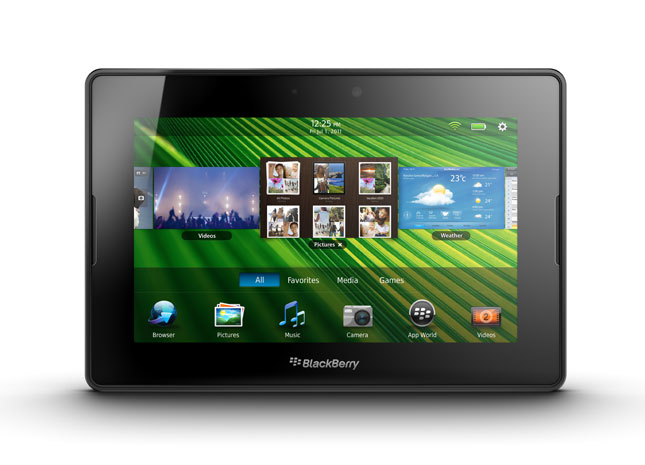 A disappointing launch of the 7-inch PlayBook and flatlining BlackBerry sales have led RIM to halt plans to release a 10-inch PlayBook tablet. According to N4BB, development has been cancelled on the tablet in favor of fast tracking development of a QNX-powered BlackBerry ‘superphone.’ And by ‘superphone,’ RIM likely means a smartphone running an OS exceptionally similar to Palm’s WebOS.
A disappointing launch of the 7-inch PlayBook and flatlining BlackBerry sales have led RIM to halt plans to release a 10-inch PlayBook tablet. According to N4BB, development has been cancelled on the tablet in favor of fast tracking development of a QNX-powered BlackBerry ‘superphone.’ And by ‘superphone,’ RIM likely means a smartphone running an OS exceptionally similar to Palm’s WebOS.
The rumored specs of RIM’s first QNX smartphone (QNX is the operating system that powers the PlayBook) sound good, if predictable. The phone will have a single-core 1.2GHz processor, about a 960×540 (estimate) resolution, and a 4.3-inch screen. None of these specs sound horrible, though we’re a bit confused after how much RIM hyped up dual-core processors like the one in the PlayBook. RIM Co-CEO Mike Lazaridis couldn’t stop talking about it in January.
However, though a 10-inch version is no longer in the works, RIM is still planning to launch its 4G PlayBooks on Verizon and Sprint this summer (possibly other carriers as well). Here’s hoping the company follows through on the PlayBook. The tablet still does not have its promised Android player or native email client.
The tablet market is in flux and it’s still difficult to say what size tablets may ultimately prove to hit it off with consumers (though 9.7-inch tablets by Apple seem to be doing quite well). Could RIM be limiting its potential in the tablet market by backing out so quickly? If it wasn’t prepared to go all in, why did the company dedicate so many resources to the PlayBook and rush to release it before it was ready? It will be interesting to see if these rumors prove true. Like Nokia, RIM is in a difficult position with a product seen as old news in a market that’s rapidly evolving. RIM may need more than a ‘superphone’ to save the day.


